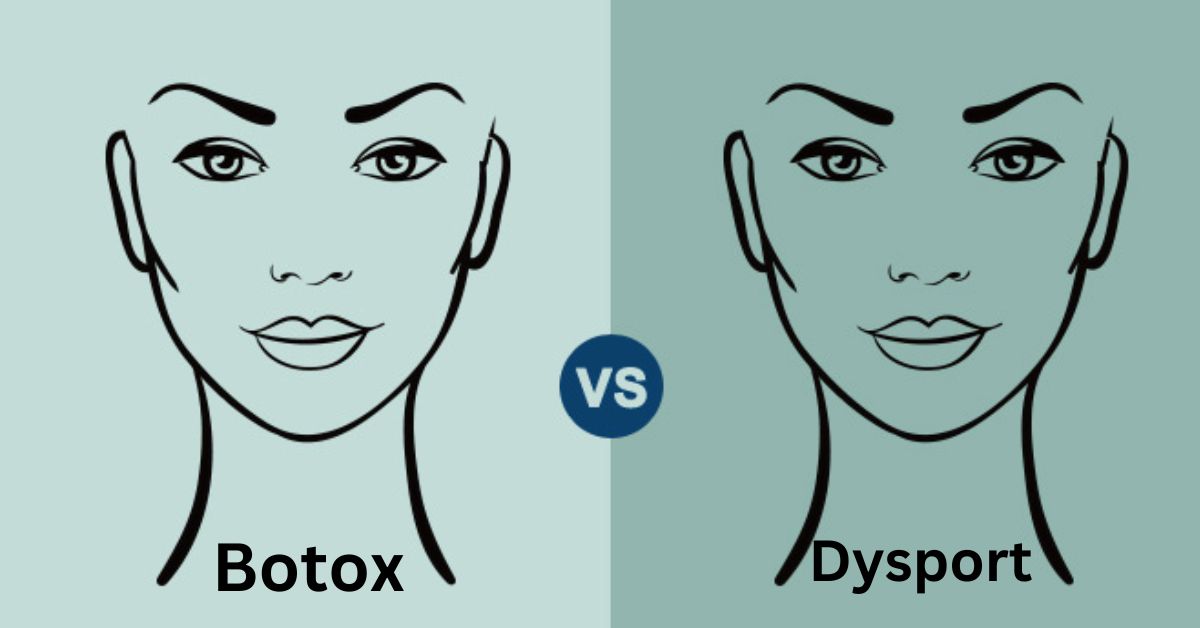When it comes to smoothing out those pesky frown lines and wrinkles, two names often come up: Dysport vs Botox. Both are popular treatments that promise to turn back the clock on your skin, but how do they stack up against each other? Whether you’re a seasoned cosmetic treatment veteran or a curious newbie, understanding the differences and benefits of these two injectables is crucial. Let’s dive into the world of Dysport and Botox to help you make an informed decision.
What Are Dysport vs Botox?
Dysport and Botox are both neurotoxins derived from botulinum toxin type A. They work by temporarily paralyzing the muscles that cause wrinkles, leading to a smoother, more youthful appearance. Botox was the first to receive FDA approval in 2002 for cosmetic use, followed by Dysport in 2009. Both have established strong safety profiles through rigorous testing and extensive use in medical and cosmetic fields.
How Do Dysport and Botox Work?
These treatments work by blocking the nerve signals that cause muscles to contract. When injected into specific facial muscles, they prevent the movements that lead to wrinkles and fine lines. The primary difference lies in their molecular structure. Dysport has smaller molecules, which means it spreads more easily over a larger area once injected. This can be beneficial for treating larger areas like the forehead but requires precise administration to avoid affecting unintended muscles.
Uses of Dysport and Botox
Cosmetic Applications
Both Dysport and Botox are primarily used to reduce the appearance of facial wrinkles. They are most commonly injected into areas like the forehead, around the eyes (crow’s feet), and between the eyebrows (glabellar lines or frown lines).
Medical Applications
Beyond cosmetics, these neurotoxins are used to treat several medical conditions. Botox, for example, is FDA-approved to treat chronic migraines, excessive sweating (hyperhidrosis), overactive bladder, and certain muscle disorders. Dysport is also used for similar medical conditions, such as cervical dystonia (a painful neck muscle spasm) and upper limb spasticity.
Targeting Frown Lines
How Dysport and Botox Reduce Frown Lines
Frown lines, those vertical lines between your eyebrows, can make you look tired, angry, or older than you feel. Both Dysport and Botox are effective at reducing these lines by relaxing the underlying muscles. Dysport’s ability to spread can be advantageous for treating these lines as it can cover a broader area with fewer injections.
Comparative Effectiveness
Studies suggest that Dysport may act faster and last longer in some patients, while others find Botox more effective. The right choice often depends on individual response and the specific areas being treated.
Beyond Frown Lines: Other Facial Areas
Crow’s Feet
Crow’s feet are the fine lines that form around the outer corners of the eyes. Both Dysport and Botox can smooth these lines, with Dysport’s wider spread potentially offering more natural-looking results in some cases.
Forehead Lines
Horizontal forehead lines are another common concern. Both treatments are effective here, but precise injection techniques are crucial to avoid a “frozen” look.
Bunny Lines
These small lines on the sides of the nose can also be treated with Dysport or Botox, though they are less commonly addressed than frown lines and crow’s feet.
Procedure and Administration
How the Treatments Are Administered
Both treatments are quick and minimally invasive. A trained professional uses a fine needle to inject the neurotoxin into specific muscles. The procedure usually takes about 10-20 minutes.
Pain and Discomfort Levels
Most patients report minimal discomfort, often describing the sensation as a small pinch. Topical anesthetics or ice can be used to reduce pain if needed.
Onset and Duration of Results
How Quickly Results Appear
With Botox, you can expect to see results within 3 to 5 days, with full effects visible in about two weeks. Dysport may show results slightly faster, sometimes within 2 to 3 days.
How Long the Effects Last
The effects of both treatments typically last 3 to 4 months. Some studies suggest that Dysport may last slightly longer in some patients, but this varies.
Cost Comparison
Pricing of Dysport vs. Botox
The cost of these treatments can vary based on factors like geographic location, provider expertise, and the number of units used. On average, Botox tends to be slightly more expensive per unit than Dysport, but Dysport often requires more units per treatment area.
Factors Influencing Cost
Other factors affecting cost include the size of the treatment area, the depth of wrinkles, and whether multiple areas are treated during the same session.
Side Effects and Risks
Common Side Effects
Common side effects for both Dysport and Botox include temporary redness, swelling, and bruising at the injection site. Some patients may experience mild headaches or a feeling of tightness in the treated area.
Serious Risks and Rare Complications
Serious complications are rare but can include drooping eyelids or eyebrows, difficulty swallowing, and muscle weakness. Choosing a qualified and experienced provider reduces these risks significantly.
Choosing Between Dysport and Botox
Factors to Consider
When deciding between Dysport vs Botox, consider factors such as your aesthetic goals, how your skin responds to treatments, and any previous experiences with either product.
Personal Preferences and Goals
Some people prefer the quicker onset of Dysport, while others might opt for Botox due to brand familiarity. Discussing your goals with a qualified provider can help determine the best choice for you.
Real Patient Experiences
Testimonials and Reviews
Many patients report high satisfaction with both treatments. Reading reviews and testimonials can provide insights into what you might expect from each.
Success Stories
Success stories often highlight significant improvements in appearance and confidence, showcasing the transformative effects of these treatments.
Professional Recommendations
What Dermatologists Say
Dermatologists generally recommend starting with a consultation to discuss your goals and any concerns. They can provide personalized advice based on your skin type and desired outcomes.
Tips from Cosmetic Professionals
Cosmetic professionals often emphasize the importance of choosing an experienced injector and maintaining a consistent treatment schedule for the best results.
Combining Treatments
Using Dysport and Botox Together
While rare, some patients may benefit from using both Dysport and Botox, targeting different areas with each to achieve a balanced, natural look.
Complementary Cosmetic Procedures
Other procedures, such as dermal fillers or laser treatments, can complement Dysport and Botox, addressing additional signs of aging for a more comprehensive rejuvenation.
Conclusion
When it comes to tackling frown lines and other facial wrinkles, both Dysport and Botox offer effective solutions. The choice between them often comes down to personal preference, specific aesthetic goals, and how your skin responds to each treatment. By understanding the nuances of these popular injectables, you can make an informed decision and achieve the youthful, refreshed look you desire.
ALSO READ: Copy And Paste Latina
FAQs
Are Dysport and Botox safe?
Yes, both Dysport and Botox are considered safe when administered by a qualified professional. They have undergone extensive testing and have been used safely for many years.
How often can I get Dysport or Botox injections?
Most patients receive treatments every 3 to 4 months to maintain results. Your provider can recommend a schedule based on your individual needs.
What should I avoid after getting injections?
Avoid strenuous exercise, excessive heat exposure, and lying down for at least four hours after treatment to prevent the neurotoxin from spreading to unintended areas.
Can I switch from Botox to Dysport or vice versa?
Yes, you can switch between Botox and Dysport if you find one works better for you or if you experience side effects with one. Consult your provider for the best approach.
How do I choose the right provider for my injections?
Look for a provider with extensive experience in administering neurotoxin injections, such as a board-certified dermatologist or plastic surgeon. Check reviews, ask for before-and-after photos, and ensure they offer a consultation to discuss your goals.











